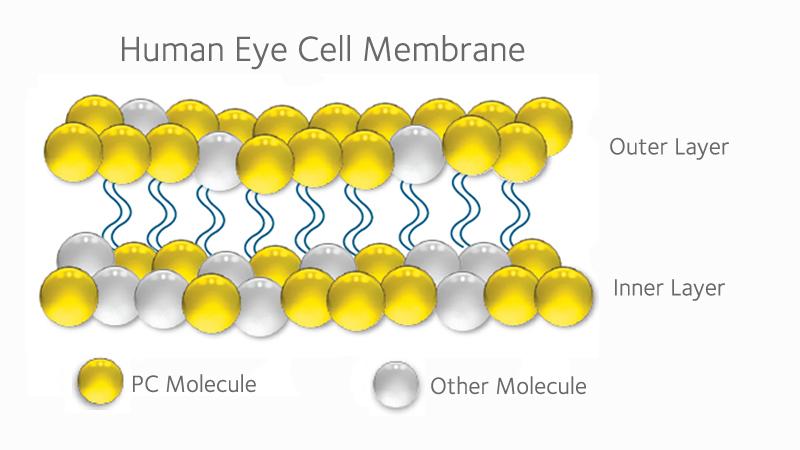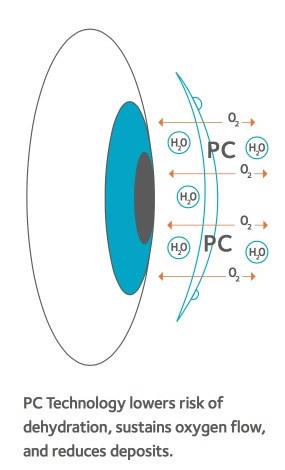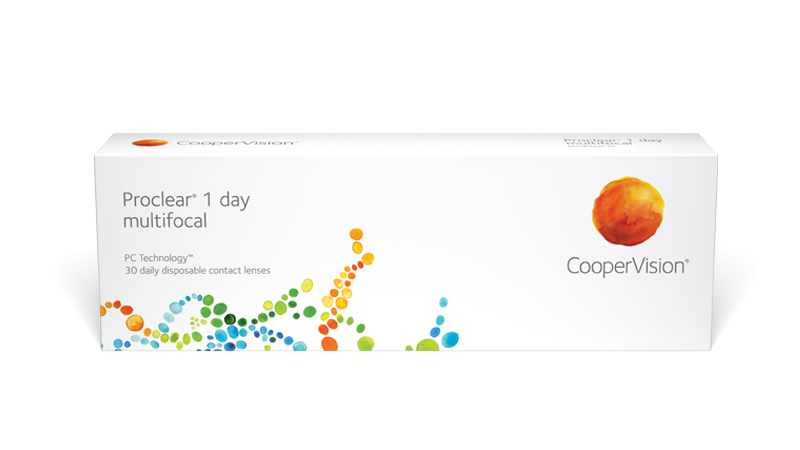Dryness and discomfort over the course of the day are among the most common complaints from contact lens wearers.1
PC Technology™ allows lenses to incorporate phosphoryl choline (PC), a highly hydrophilic compound naturally found in the cells of the eye and the body. It strongly binds water to the lens surface, and throughout the lens—reducing the rapid evaporation that can lead to dryness.2
The result is a highly biocompatible lens that imitates substances found on cells of the human eye.

How it works
PC Technology is not an additive, coating or surface treatment. It follows nature’s example using advanced molecular science. PC Technology™ mimics substances found naturally on the outside of every cell, including cells of the human eye. As a result, CooperVision® Proclear® 1-day contact lenses attract water and thereby help maintain hydration.

When phosphorylcholine molecules bind with water molecules in natural tears, it creates a “shield” of water around the lens. As a result, PC Technology™:
- Lowers the risk of dehydration and sustains oxygen flow.
- Gives the lens with a more deposit resistant surface, thus reducing the risk of lens irritation.
- Provides natural wettability, reducing the buildup of lipids and proteins throughout the day
PC Technology™ lenses retain up to 97% of their original water content, even after 12 hours of wear—offering true all-day comfort for your patients4.
1 Dumbleton K, Caffery B, Dogru M, et al. The TFOS International Workshop on Contact Lens Discomfort: Report of the Subcommittee on Epidemiology. Investigative Opthalmology & Visual Science Invest Ophthalmol Vis Sci. 2013;54(11). doi:10.1167/iovs.13-13125.
2 Hall B, Jones S, Young G, Coleman S. The on-eye dehydration of Proclear Compatibles lenses. CLAO J. 1999;25(4):233-237.
3 Hall B, Jones S. Clinical performance of a monthly lens and patient comfort. Contact Lens Spectrum. December 2000.
4 A prospective, single-center, double-masked, contralateral eye, randomized, daily wear, one day non-dispensing study. 21 subjects. A gravimetric method was used to determine the lens water content and dehydration during the 12 hours of lens wear.






